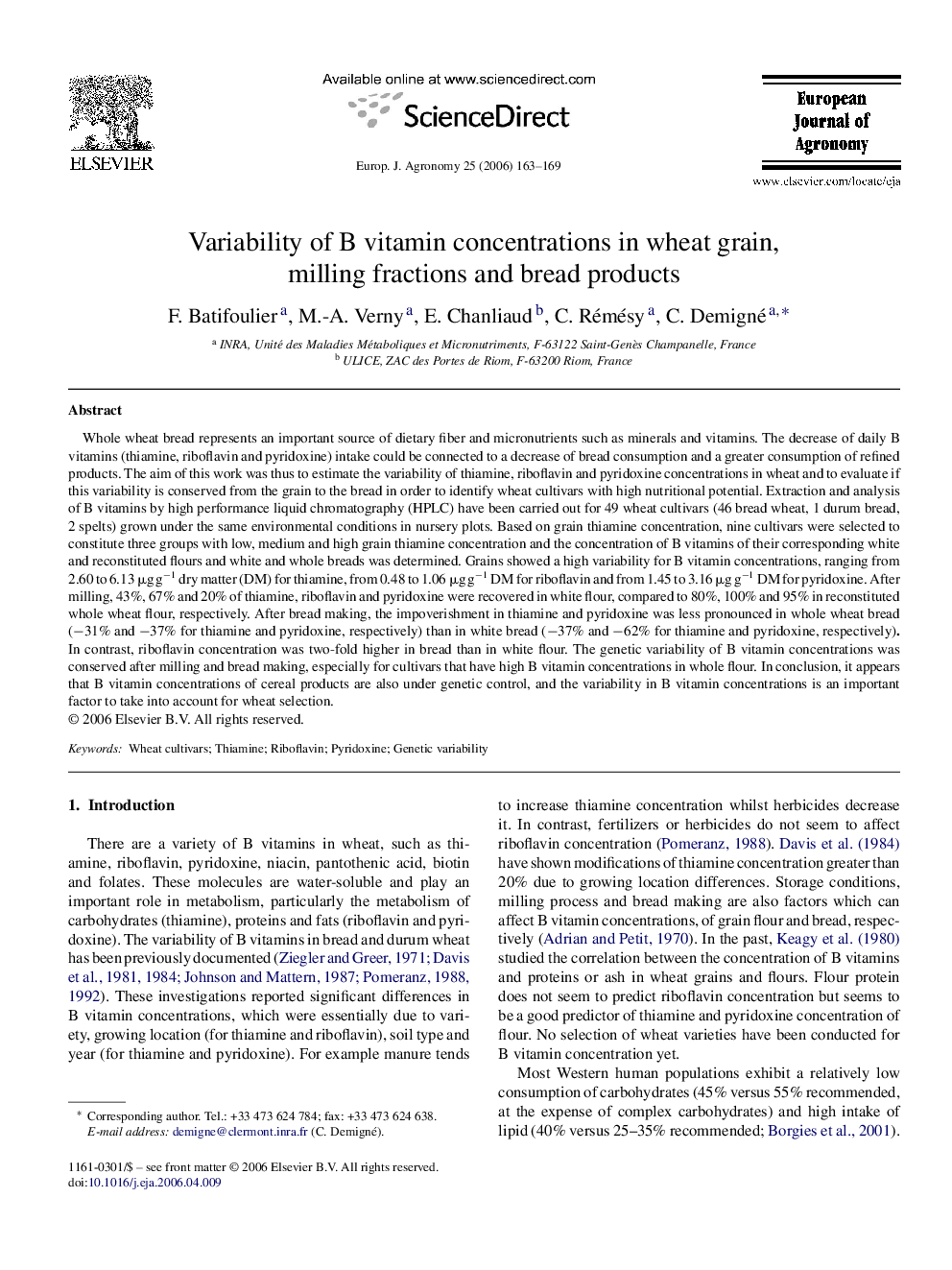| Article ID | Journal | Published Year | Pages | File Type |
|---|---|---|---|---|
| 4509715 | European Journal of Agronomy | 2006 | 7 Pages |
Whole wheat bread represents an important source of dietary fiber and micronutrients such as minerals and vitamins. The decrease of daily B vitamins (thiamine, riboflavin and pyridoxine) intake could be connected to a decrease of bread consumption and a greater consumption of refined products. The aim of this work was thus to estimate the variability of thiamine, riboflavin and pyridoxine concentrations in wheat and to evaluate if this variability is conserved from the grain to the bread in order to identify wheat cultivars with high nutritional potential. Extraction and analysis of B vitamins by high performance liquid chromatography (HPLC) have been carried out for 49 wheat cultivars (46 bread wheat, 1 durum bread, 2 spelts) grown under the same environmental conditions in nursery plots. Based on grain thiamine concentration, nine cultivars were selected to constitute three groups with low, medium and high grain thiamine concentration and the concentration of B vitamins of their corresponding white and reconstituted flours and white and whole breads was determined. Grains showed a high variability for B vitamin concentrations, ranging from 2.60 to 6.13 μg g−1 dry matter (DM) for thiamine, from 0.48 to 1.06 μg g−1 DM for riboflavin and from 1.45 to 3.16 μg g−1 DM for pyridoxine. After milling, 43%, 67% and 20% of thiamine, riboflavin and pyridoxine were recovered in white flour, compared to 80%, 100% and 95% in reconstituted whole wheat flour, respectively. After bread making, the impoverishment in thiamine and pyridoxine was less pronounced in whole wheat bread (−31% and −37% for thiamine and pyridoxine, respectively) than in white bread (−37% and −62% for thiamine and pyridoxine, respectively). In contrast, riboflavin concentration was two-fold higher in bread than in white flour. The genetic variability of B vitamin concentrations was conserved after milling and bread making, especially for cultivars that have high B vitamin concentrations in whole flour. In conclusion, it appears that B vitamin concentrations of cereal products are also under genetic control, and the variability in B vitamin concentrations is an important factor to take into account for wheat selection.
